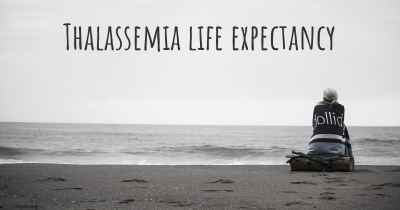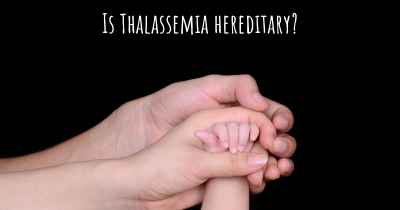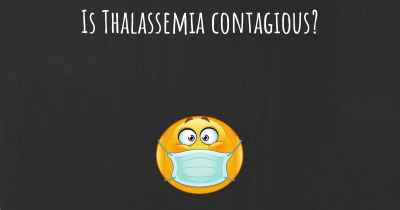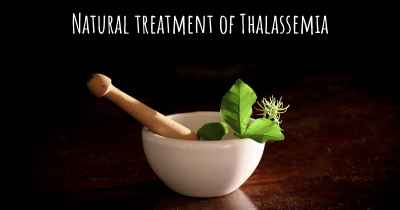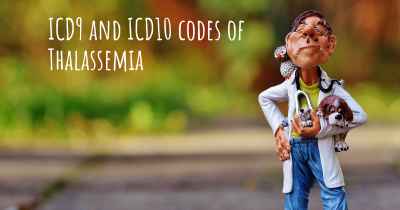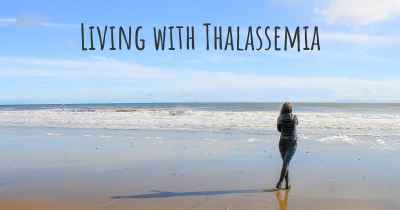Which are the symptoms of Thalassemia?
See the worst symptoms of affected by Thalassemia here

Symptoms of Thalassemia
Thalassemia is a genetic blood disorder that affects the production of hemoglobin, the protein responsible for carrying oxygen in red blood cells. It is characterized by abnormal hemoglobin production, leading to anemia and various symptoms. The severity of symptoms can vary depending on the type and severity of thalassemia.
1. Fatigue and Weakness
One of the most common symptoms of thalassemia is fatigue and weakness. The reduced production of healthy red blood cells results in a decreased oxygen supply to the body's tissues, leading to feelings of tiredness and weakness.
2. Pale Skin
Anemia caused by thalassemia can cause the skin to appear pale or yellowish. This is due to the reduced number of red blood cells and the decreased amount of hemoglobin, which gives blood its red color.
3. Shortness of Breath
As thalassemia affects the oxygen-carrying capacity of the blood, individuals may experience shortness of breath, especially during physical exertion or activities that require increased oxygen supply.
4. Delayed Growth and Development
In severe cases of thalassemia, particularly in children, the condition can affect growth and development. The inadequate supply of oxygen to the body's tissues can lead to delayed growth, both physically and mentally.
5. Facial Bone Deformities
In some forms of thalassemia, particularly thalassemia major, the excessive destruction of red blood cells can result in bone marrow expansion. This can lead to facial bone deformities, such as prominent cheekbones, a protruding forehead, and an enlarged spleen.
6. Enlarged Spleen and Liver
Thalassemia can cause the spleen and liver to enlarge. The spleen is responsible for filtering and removing old or damaged red blood cells from circulation. In thalassemia, the increased destruction of red blood cells can overwhelm the spleen, causing it to enlarge. Similarly, the liver may also enlarge as it works harder to clear the excessive breakdown products of red blood cells.
7. Dark Urine
Thalassemia can lead to the breakdown of red blood cells, resulting in the release of a pigment called bilirubin. This can cause the urine to appear dark or tea-colored.
8. Bone Problems
People with thalassemia may experience bone problems, such as osteoporosis or osteopenia. The abnormal production of red blood cells can affect bone health and lead to brittle or weak bones.
9. Abdominal Swelling
In severe cases of thalassemia, the excessive destruction of red blood cells can lead to an accumulation of fluid in the abdomen, causing abdominal swelling and discomfort.
10. Heart Complications
Thalassemia can put a strain on the heart, leading to various complications. Over time, the heart may become enlarged and weakened, increasing the risk of heart failure or arrhythmias.
If you or your child experience any of these symptoms, it is important to consult a healthcare professional for a proper diagnosis and appropriate management of thalassemia. Early detection and treatment can significantly improve the quality of life for individuals with thalassemia.
- Beta-thalassemia major: Very severe anemia, which usually starts at 6 months of age with paleness, loss of appetite, drowsiness and / or apathy, and decreased growth. Untreated, this disease usually ends fatally within 18 months.
- Beta und Alpha-Thalassämie minor: Träger der Erbanlage, leichte Anämie in der Regel ab dem Jugendalter, schnelle Ermüdbarkeit, Konzentrationsstörungen. Ab dem Erwachsenenalter auch rheumatische Beschwerden, Gelenkschmerzen, Diabetes, Osteoporose, Depressionen und andere Begleiterkrankungen.
- Beta and alpha-thalassemia minor: Carriers of the thalassemia trait, mild anemia usually from adolescence, fast fatigue, difficulty concentrating. From adulthood also rheumatic complaints, joint pain, diabetes, osteoporosis, depression and other comorbidities.
Posted Jan 23, 2018 by Thalassämiehilfe ohne Grenzen e. V.
a pale appearance or a yellow color to the skin (jaundice)
irritability.
deformities of the facial bones.
slow growth.
a swollen abdomen.
dark urine.
Posted Sep 20, 2017 by Fasiha 500
- Beta-thalassemia major: Very severe anemia, which usually starts at 6 months of age with paleness, loss of appetite, drowsiness and / or apathy, and decreased growth. Untreated, this disease usually ends fatally within 18 months.
- Beta und Alpha-Thalassämie minor: Träger der Erbanlage, leichte Anämie in der Regel ab dem Jugendalter, schnelle Ermüdbarkeit, Konzentrationsstörungen. Ab dem Erwachsenenalter auch rheumatische Beschwerden, Gelenkschmerzen, Diabetes, Osteoporose, Depressionen und andere Begleiterkrankungen.
- Beta and alpha-thalassemia minor: Carriers of the thalassemia trait, mild anemia usually from adolescence, fast fatigue, difficulty concentrating. From adulthood also rheumatic complaints, joint pain, diabetes, osteoporosis, depression and other comorbidities.
Posted Jan 24, 2018 by Jürgen M. 6070
